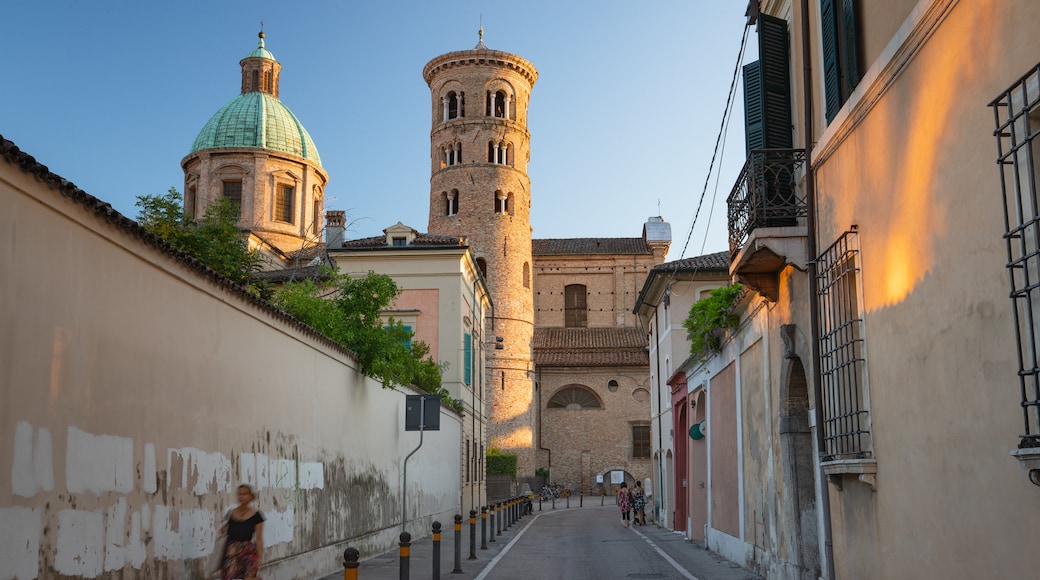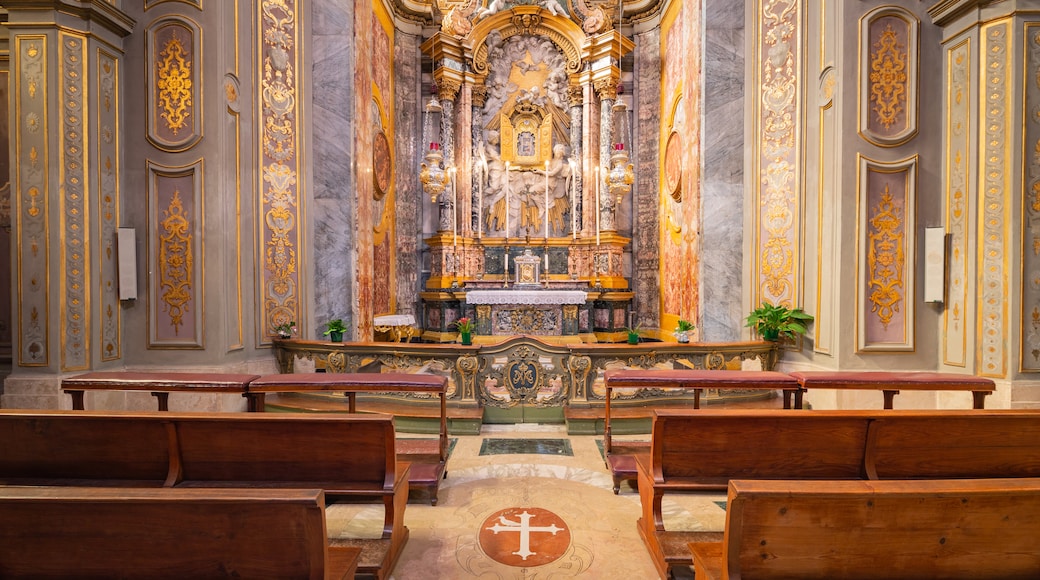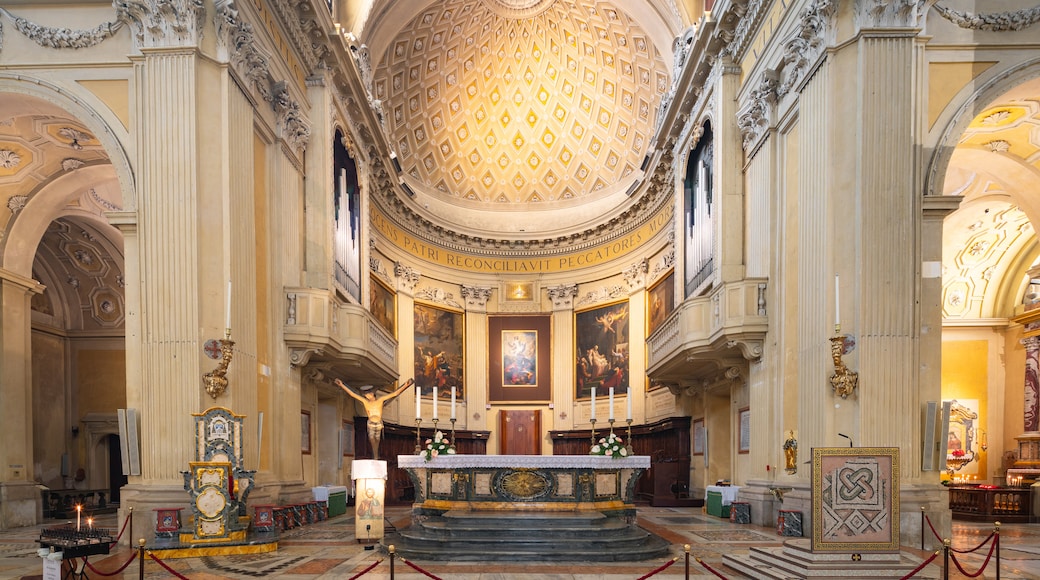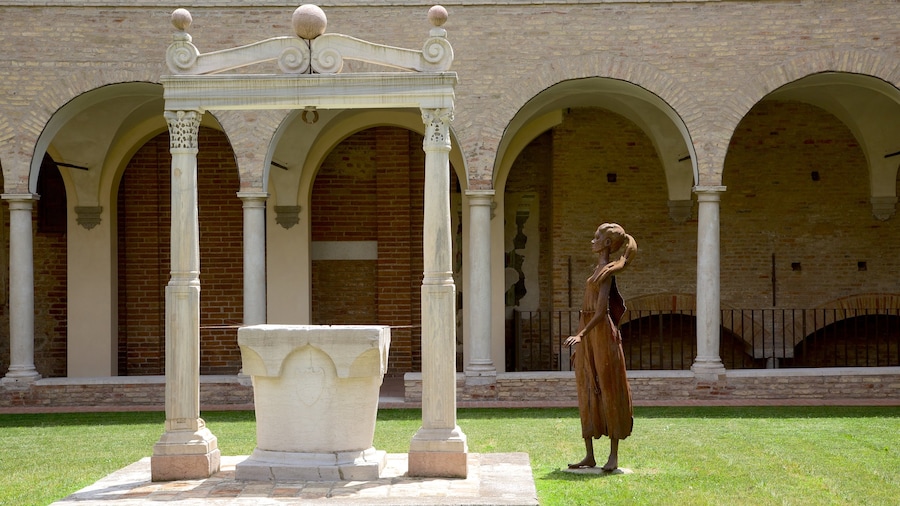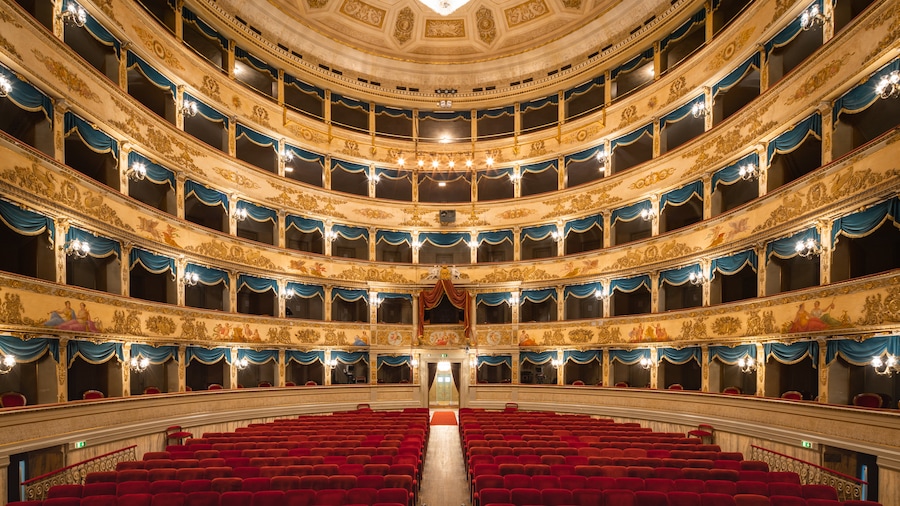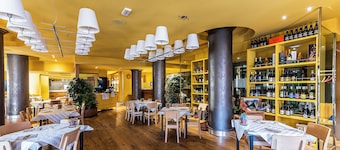Standing between two plazas, this 18th-century Baroque cathedral has an imposing façade and myriad religious artworks. Check out the historic relics in the museum.
With its blue-green dome and majestic façade, the Ravenna Cathedral is one of the city’s crowning jewels. The current incarnation dates back to 1734, although churches have stood on this spot since the 4th century. Pass through the arched portico and gaze at the opulent religious decorations in the interior.
The dome is 154 feet (47 meters) high and covered in frescoes by Italian artist Andrea Barbiani. Study the religious imagery in these murals, illuminated by the light of the dome’s eight surrounding windows. Notice the Latin cross plan of the church as well as the altarpiece that portrays St. Christopher. Other highlights include the sarcophagus containing the remains of bishops and the painting of Jesus Among the Saints Anthony and James.
Meander between the pine trees of the spacious Piazza Duomo west of the church. From the heart of the square rises a gray granite pillar topped by a statue of the Virgin Mary. From the piazza, look back to appreciate the yellow-and-white arches and columns of the church’s powerful façade. Beside the cathedral is a free-standing bell tower from the 10th century.
Visit the Archiepiscopal Museum in the southeastern corner of the cathedral for an understanding of the structure’s context and history. Inspect surviving elements from the original church and examine some of the 6th-century works of art.
The cathedral is open for visits Monday through Saturdays from morning until evening, with a closure for lunch. There is no admission fee. As with all religious buildings, be respectful of those entering for quiet prayer.
The Ravenna Cathedral is on the western side of the Piazza Arcivescovado, a little south of the historic center of the city. Ride a bus to one of the stops near the church. Make sure to see some of the nearby sights, such as the Piccolo Museo delle Bambole e dei Balocchi, Palazzo Rasponi dalle Teste and the Casa del Mutilato di Guerra.
